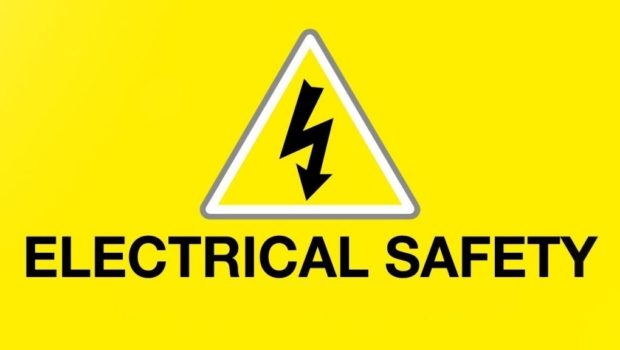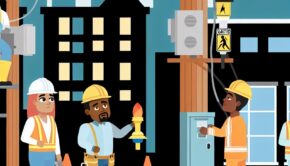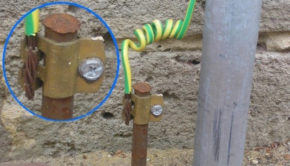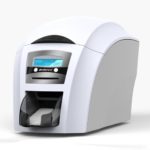Why Electrical Test Safety Matters – The Importance, Standards & Test Equipment
With the constant development of electrical and electronic products comes the need for superior electrical safety. In electrical construction, manufacture, testing and repair, and maintenance, safety is indispensable. Throughout the years, safety standards and regulations have been evolving to make the use of electrical test equipment as efficient and reliable as possible.
Some of the commonly used testing instruments and devices include power quality analyzers, battery testing equipment, non-contact voltage testers, multimeters, insulation testers, relay test sets, ground resistor testers, and ohmmeters.
Why is Electrical Test Equipment Safety Important?
Electrical testing equipment safety is extremely important to avoid and deal with electrical hazards. Improper use of the test equipment, high voltage, current leakage to the ground, or the use of wrong methods of testing can pose huge threats to the safety of lives and the surroundings.
Human lives are highly prone to dangers from electrical devices such as electrical shocks, electrocution, burns, fires, and explosions. Shock hazards can have mild effects such as painful shocks and loss of muscle control, to severe effects such as respiratory arrest, nerve damage, cardiac arrest, and even death. A current as small as 1 mA can cause mild shocks. So, it is essential to test for electrical safety compliance in battery-powered devices that show a possible risk of shock hazards from insulation failure.
Apart from this, these electrical hazards are dangerous for the equipment and the environment as well. Arc blasts and arc flashes have a tremendous amount of energy that can break equipment, and even result in explosions and fires from the combustible gases and chemicals present in the atmosphere.
When is Electrical Test Equipment Safety Required?
To minimize the possibilities of threats from electrical equipment, safety testing is performed during manufacture. All electrical devices are required to meet minimum safety standards before they are made available for use. This is monitored by regulatory bodies and agencies such as the U.S. Occupational Safety and Health Administration (OSHA) and the National Institute for Occupational Safety and Health (NIOSH).
These bodies assess the possible risks and hazards from the test equipment and set certain minimum requirements and conditions that must be followed to alleviate them, such as proper test methods and techniques, voltage and current leakage protection, and design conformity. Equipment that meets these standards can be certified and ready for use.
The agencies perform safety testing and certification for some sample units of equipment, and the manufacturing facility is also tested in regular time intervals for meeting the minimum criteria and standards. Every piece of equipment is required to be tested for safety by the manufacturer, and the results are to be recorded.
Selection of Electrical Test Equipment
In order to comply with electrical industry standards and regulations, there is a need to use the right test instruments according to the application. Whether the electrical test equipment is used in electrical installation work, voltage verification, equipment maintenance, verification of the absence of voltage for de-energized work, troubleshooting, voltage measurements or other diagnostic work, it should meet the following requirements:
- Voltage indicating instrument suitable for the given testing conditions
- Environment
- Correct category (CAT I, CAT II, CAT III, or CAT IV)
- Continuity test instrument
- Insulation resistance test instrument
The category (CAT) ratings for electrical test equipment are as follows:
- CAT I
- This category includes protected electronic equipment, any high-voltage low-energy derived from a high-winding resistance transformer, and equipment with transient-limiting protection.
- The peak impulse transient range is from 600 V to 4,000 V with a 30-ohm source. The transient overvoltage’s are limited to a low level.
- CAT II
- This category covers single-phase receptacle circuit level and plug-in loads, fixed or non-fixed powered devices, portable tools, office equipment and similar loads.
- All outlets at more than 10 m (30 feet) from Category III sources and all outlets at more than 20 m (60 feet) from Category IV sources come under this category.
- The peak impulse transient range is from 600 V to 6,000 V with a 12-ohm source.
- CAT III
- This category includes distribution level wiring, three-phase distribution, including single-phase commercial lighting, distribution level-fixed primary feeders or branch circuits, 3-phase bus and feeder circuits, motor control centers, load centers and distribution panels.
- Permanently installed loads, large loads that can generate their own transients, and fixed installations such as switchgear and polyphase motors also come under CAT III.
- The peak impulse transient range is from 600 V to 8,000 V with a 2-ohm source.
- CAT IV
- This category covers the origin of installation, such as power lines at the utility connection and the service entrance, overhead and underground cable runs, three-phase at utility connection, any outdoor conductors or primary supply level.
- It covers the highest and most dangerous level of transient overvoltage in utility service.
- The peak impulse transient range is from 600 V to 12,000 V with a less than 1-ohm source.
How is Test Equipment Safety Certified?
Many tests are performed on the electrical test equipment to verify and certify the safety of the instruments. These tests include:
- AC and DC Hipot or Dielectric Withstand Test
- Leakage Current Test
- Insulation Resistance Test
- Ground Bond Test
Common Safety Standards
Safety standards are set by government bodies such as OSHA and NIOSH. OSHA enforces the rules and regulations, while NIOSH provides useful information on workplace safety. Other agencies such as Underwriters Laboratories (UL), the Canadian Safety Association (CSA), and Technischer Überwachungsverein (TUV) test and certify the safety of electrical and electronic equipment.
- The OSHA 29 CFR 1910 Subpart S is a mandatory standard that covers design safety standards for electrical systems, safety-related work practices, safety-related maintenance requirements and safety requirements for special equipment. This standard also refers to NFPA 70E, NFPA 70, ANSI C2-81, ANSI C33.27-74 for helpful information.
- The OSHA 29 CFR 1910 Subpart I is a mandatory standard that covers Personal Protective Equipment (PPE), including face and eye protection, footwear and insulating gear.
- Other advisory standards are set by NIOSH, NFPA, ANSI, IEC, IEEE for the safety of students and apprentices and electrical safety in the workplace, electrical installations, and recommended practices.
Conclusion
Testing processes that involve a high risk of shock hazards and arc blasts should be performed by trained and qualified persons only. Personal Protective Equipment (PPE) must be used when performing these tasks to avoid electrical hazards.
Test instruments must be rated under the proper category (CAT). Safety testing must be done regularly and equipment must comply with the necessary standards. And more importantly – a culture of safety in all processes and across the business will ensure process reliability, compliance and long-term benefits.















